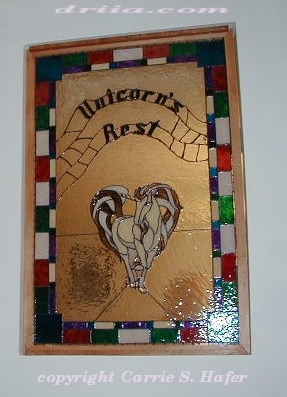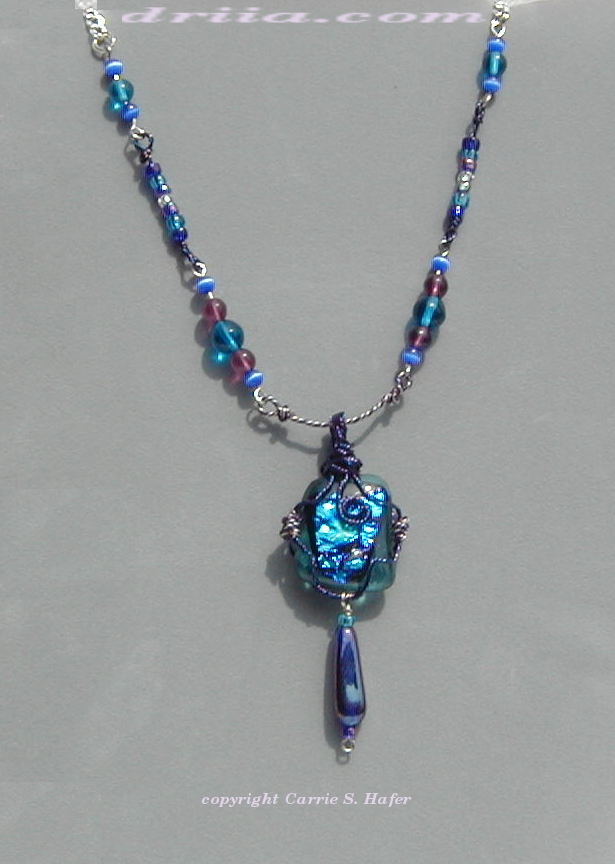Setting up a Workshop / Studio
by Carrie S. Hafer
If you look around the web and talk to various artisans you will find lots of advice on setting up your own work space.Things to consider:
- available space
- required use and storage needs
- flexibility of space as needs change
- can you use the space available “as is”
- do you need more power, electricity, outletts…etc.
- how is the lighting? can you add more if needed?
- will you be doing projects that require good ventilation?
- do you need a sink / clean up area?
I could go on – but you get the point….planning – not always fun; but it can be if that’s your thing. When planning my own studio space I ran into several bonuses and a number of draw backs.
Bonuses – I am fairly good at space planning. I had a ready made room, around 125 sq ft to work with, a door that closed it off and an adjacent storage area. It just needed some updates for my needs and the ceiling was exposed so adding new electrical wasn’t too big a hassle to plan or do. We had remodeled our kitchen so I recycled several cabinets to the work shop in the garage and several more to my studio for additional storage. I was able to put in fully secured and supported shelving.
Drawbacks – I found that the shelving I had around the walls was not properly supported and I ended up having to tear it all out and put in all new shelving (which was also a bonus). I needed more electrical, and more lighting. I knew that what I wanted to do needed much better ventilation that what I had. Proper air flow was trickier – but more on that later. No water supply or clean up area directly connected to my studio.
Okay so it was a lot of work – but it’s turned out fairly well. I had my husband Craig helping me so I didn’t have to spend anything on a “handy man” and I’m fairly handy myself.
My studio remodel went something like this….
Location was fairly obvious – previous homeowners had a “storage / craft room” walled off in the basement. The studio side of the staircase was exposed and quite ugly. So first things first – build a wall. Craig and I added additional supports, as well as headers and footers to our “new wall”. After carefully marking where the studs were we put up drywall, did the finishing and priming and painting.
The other three walls just needed a fresh coat of paint. In the process of getting the really long wall prepped for painting we discoverd that the shelves there were not actually supported by studs. Not good. I knew that supplies and materials were apt to get heavy and I wanted as much support as possible. So we took out all the shelves – BOY! am I glad I did….. they were shakier than we first realized. I would have been devastated if things came crashing down later.
Naturally this set back my schedule and budget. That’s how it goes. So we fixed the walls where needed, prepped, primed and re-painted. Now for all new shelving! Yeah – looks really spiffy when it’s a nice and new…. makes you feel good just to look at it. (yeah I know – I’m weird)
Shelving – I decided that since I was putting in all new – it needed to be utilitarian, not too expensive (since it wasn’t originally part of the budget), and most importantly FLEXIBLE. So I checked out several stores and decided that my best bet was a hanging shelf track system. It was available in both of the major hardware store chains near us, and that made finding all the parts easier too. I have to admit I fell in love with this system. I’ve redone two closets with it in addition to the studio…and I have plans for several more closets in my home. Here the biggest pain was getting some of the really long shelves down into the basement. Ooops, we forgot about that…so we managed to get the really long pieces in through a strategically placed basement window. Other wise we could have cut them shorter and still used all the space. I just didn’t want to do that. But who knows we may still change things up in the future.
We had made sure all the vertical supports were attached to wood framing, and they were long too so I can have shelves down to about 2 ft off the ground if needed. This is were flexibility comes in. I can decide any time I want to that the shelf configuration is not working for me…and change it – with out ripping out the frame work. Sure I may need to cut wire shelves shorter or by additional brackets but nothing too outrageous needs to happen in order to change things up.
Storage – I knew that in addtion to shelves I would want for more storage. So the bottom shelf is placed roughly 45 inches from the floor. Why? Well – I found these really nifty plastic storage drawer sets that are about 42-43 tall. They have anywhere from 5 to 7 drawers and they are on wheels so I can move them around as needed. I also have two plastic base cabinets with doors that I put onto rolling platforms.
I use the storage towers to group my tools and various supplies that would not work well on the shelves. And the base cabinets for bulky items that are not pulled out as frequently. In addition to these I have some storage tubs with and with out wheels, a small book case that I added shelves to that fits in nook, and a wooden stereo system rack on wheels for my glass storage. And of course as mentioned earlier several cabinets from my old kitchen which are hung high on the new wall by the stairs. I use those to store books, recycled jars and other materials that I need available but not direct to hand.
Work Surfaces – Making decisions about work surfaces got trickier…. I already had a workbench that I had built years before, made from recycled shipping pallets and packing crates. But after that was in place I had limited room left. So I did a lot of shopping around and comparing my needs against what was available at the time. Eventually I found a really nice rolling kitchen island / cart with a drawers and a stainless steal top. It was on remainder at a local shop, again steaply discounted (affordable), and added useful storage. Next I have a rolling three tier metal cart (on wheels) which I can use to hold projects I had stopped at various stages. Then I needed something to put my glass grinder on, fortunately this didn’t need to be large – just movable and work hight. I decided to re-cycle an old (very old) computer stand. And finally I needed a workstation for power tools… a serviceable rolling tool cart with wood top and a power strip serves nicely and again has storage! I also added a topper to the plastic base cabinets to create a unified surface.
Don’t forget to pay attention to the overall height of your work surfaces….is it comfortable for you? Will you be sitting or standing a lot? Do you need deep or shallow for your work? Some people need things only 20 inches deep other need 36, 48 or maybe just 12 inches to work on. Look at what you plan to do, think about what else you may want to do…and decide from there what is comfortable. If it’s not comfortable – no matter how good it looks – you won’t use it.
Electric & Ventilation – Well as mentioned above the ceiling in my work room is exposed so I was able to address the ventilation issue by installing a kitchen vent hood over the center of my room (above the island work cart), and have it vent to the outside. This needed a dedicated circuit so I did hire an electrician to add that in. I aleady had a power strip, and ceiling light…but it needed more lighting on the other side of the vent hood, and power on the wall near the workbench. I have added portable clamp lights and long corded power strips in order to plug things in where I needed them. Eventually I will need to make more permant changes – but the budget and need hasn’t merited it yet.
Organizing – Last thing you want to do is spend alot of time once you have the room set up – but taking time to plan and organize where everything goes will save time and aggrevation in the long run…. trust me on this, I did this project in stages and added more storage in stages…so each time I added a piece I found I needed to re-organize where I kept things.
I have thing organized by type of craft or art work I’m doing….if you have only one or two main interests this isn’t too bad. But the more you have the more challenginf it gets. I have areas devoted to glass, polymer clay, craft paints, oil paints, beading, wooden items, metals & wire, fabric, leather, paper, and misc found items.
Then there are things I categorize as “supplies” – usually things like glue, craft sticks, paper towels, dust masks, baggies, and the like. Things that get used up but are not materials and they aren’t strictly tools either.
What about a system for storing raw materials vs items that are “finished” but not yet part of a completed piece. I often make various components that I like but haven’t yet decided the whole design it yet or if it’s a stand alone.
Now that I’ve described my own process – you can see that it can be a lot of work. But it’s very nice to have a studio that has all my tools, materials, and other stuff in one place. I’ll probably continue to “tweak it” but overall I’m very happy with the results.
Whatever your art – may you make a place of your own to work in. Enjoy setting things up the way you want and need them – you deserve it!
Copyright Carrie S. Hafer, July 2006
Driia’s Dreams, LLC
www.driia.com

